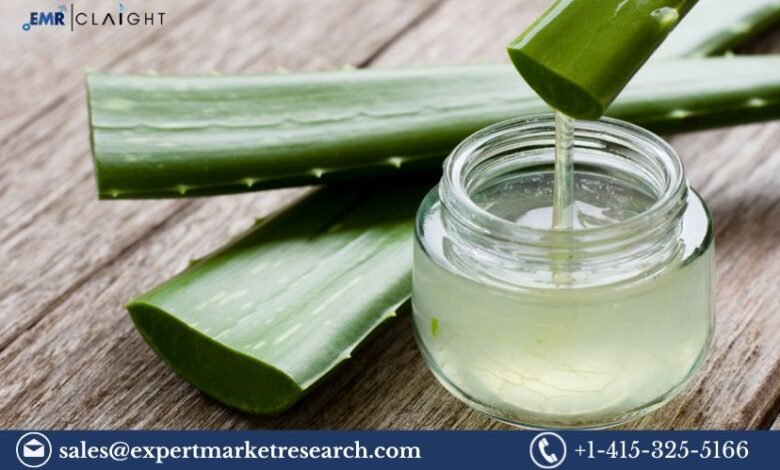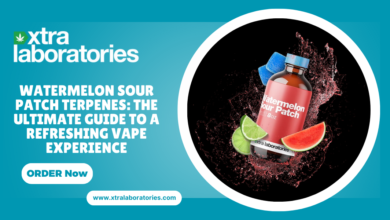Aloe Vera Powder Manufacturing Plant Project Report 2025: Technical, Financial, and Operational Insights
Aloe Vera Powder Manufacturing Plant Project Report 2025

Introduction
Aloe vera powder is a highly sought-after product in the cosmetic, pharmaceutical, and food industries due to its numerous health benefits, such as its soothing and healing properties. Aloe vera has long been recognized for its medicinal qualities, particularly in the treatment of skin conditions, digestive disorders, and inflammation. The growing awareness about natural health products and the rise in consumer demand for organic skincare, health supplements, and food ingredients have made aloe vera powder a popular commodity. This Aloe Vera Powder Manufacturing Plant Project Report delves into the plant setup, manufacturing process, market prospects, and financial considerations for establishing a production facility for aloe vera powder.
Market Overview
The global market for aloe vera powder is witnessing significant growth due to the increasing popularity of natural and organic products. Aloe vera powder is used extensively in the formulation of cosmetics, personal care products, food, and beverages, thanks to its high nutritional value and medicinal properties. It is rich in vitamins, antioxidants, enzymes, and amino acids, which contribute to skin health, hydration, digestion, and detoxification.
Key Market Drivers:
- Rising Demand for Natural and Organic Products: With consumers becoming more conscious about their health and beauty choices, there is a growing demand for aloe vera-based products. The preference for natural and chemical-free alternatives has significantly fueled the demand for aloe vera powder.
- Expansion of Cosmetic and Skincare Industries: Aloe vera powder is widely used in skincare products such as creams, lotions, and gels. As the global skincare market continues to grow, the demand for aloe vera powder is expected to rise correspondingly.
- Health and Wellness Trends: Aloe vera’s potential health benefits, including its role in improving digestion, boosting immunity, and reducing inflammation, are increasingly being recognized by consumers. As a result, aloe vera powder is being added to health supplements, functional beverages, and foods.
- Rising Preference for Plant-Based Ingredients: The demand for plant-based ingredients in the food and beverage industry is increasing as more consumers opt for plant-based diets. Aloe vera powder is commonly used in smoothies, juices, and dietary supplements.
- Growing Awareness of Aloe Vera Benefits: Increased consumer awareness about the wide range of benefits that aloe vera offers, from skin care to gut health, has contributed to its rising popularity across various sectors.
Get a Free Sample Report with Table of Contents@
Applications of Aloe Vera Powder
Aloe vera powder is a versatile product with applications across several industries. Its primary uses include:
- Cosmetic and Personal Care Products: Aloe vera powder is a key ingredient in the production of moisturizers, sunscreens, facial masks, shampoos, conditioners, and body lotions. It is valued for its soothing and hydrating properties and its ability to treat skin irritations and acne.
- Health and Wellness Products: Aloe vera powder is incorporated into dietary supplements, functional drinks, and health foods due to its digestive and immune-boosting properties. It is commonly found in capsules, tablets, powders, and beverages.
- Pharmaceuticals: Aloe vera has therapeutic properties, making it a common ingredient in topical treatments for burns, wounds, and other skin ailments. Aloe vera powder is also used in the production of ointments, creams, and lotions for treating gastrointestinal and skin disorders.
- Food and Beverages: Aloe vera powder is used as a food ingredient in health beverages, smoothies, teas, and health supplements. It is often marketed as a natural detoxifying and hydrating ingredient.
Manufacturing Proces
The production of aloe vera powder involves several key steps, from sourcing the raw aloe vera leaves to processing and packaging the final product. Below is a detailed breakdown of the manufacturing process:
1. Sourcing and Harvesting Aloe Vera Leaves
The first step in manufacturing aloe vera powder is the sourcing of high-quality aloe vera leaves. Aloe vera is typically grown in warm, arid climates and requires minimal water and maintenance. The leaves are harvested by hand, and only mature, healthy leaves are selected for processing.
2. Washing and Cleaning
After the leaves are harvested, they are thoroughly washed to remove any dirt, pesticides, and other contaminants. This is an important step to ensure the final product’s quality and safety.
3. Skinning and Filleting
The outer skin of the aloe vera leaves contains aloin, a compound that can have a laxative effect and is undesirable for most aloe products. The leaves are carefully peeled, and the inner gel is extracted. The gel contains the majority of the beneficial compounds, including vitamins, minerals, enzymes, and amino acids.
4. Gel Processing and Concentration
The aloe vera gel is processed and concentrated to reduce its moisture content. The gel is filtered and purified to remove any remaining impurities. After filtration, the gel is concentrated into a thick paste by evaporating excess water.
5. Drying
The concentrated aloe vera gel is then dried to produce aloe vera powder. There are several drying methods that can be employed, including:
- Spray Drying: Aloe vera gel is sprayed into a hot chamber, where the moisture evaporates, leaving behind fine aloe vera powder.
- Freeze Drying: Aloe vera gel is frozen and then subjected to a vacuum to remove moisture without damaging the nutrients. This method helps preserve the maximum nutritional value of the gel.
- Sun Drying: In some cases, aloe vera gel is sun-dried, although this method is less common due to the risk of nutrient loss.
6. Grinding and Pulverizing
After the aloe vera gel is dried into a solid form, it is ground into a fine powder. This process involves the use of specialized grinding equipment to achieve the desired powder consistency.
7. Packaging
Once the aloe vera powder is produced, it is packaged in airtight containers to preserve its freshness and prevent contamination. The packaging must be designed to keep the powder free from moisture, light, and air, which can degrade its quality. Packaging is done in compliance with safety and regulatory standards.
Plant Layout and Infrastructure
Setting up an aloe vera powder manufacturing plant requires careful planning and investment. The plant must be designed to facilitate efficient processing while adhering to safety, quality, and environmental regulations. Key areas of the plant include:
- Raw Material Storage: Aloe vera leaves should be stored in a cool, dry place before processing. Proper storage helps prevent spoilage and ensures that the raw materials remain fresh.
- Processing Area: This is where the primary processing steps, such as washing, skinning, and extracting the aloe vera gel, occur. The area must be equipped with specialized machinery for each step, including filtration, concentration, and drying.
- Drying and Grinding Area: The aloe vera gel is dried and ground into a powder in this section of the plant. It requires drying equipment, such as spray dryers or freeze dryers, and grinding mills to produce fine powder.
- Quality Control Laboratory: A laboratory is essential for testing the quality of the aloe vera powder. It is important to monitor the moisture content, nutrient levels, and purity of the product.
- Packaging Area: This section is responsible for packing the finished aloe vera powder into containers for distribution. Packaging machines, sealing equipment, and labeling machines are required.
- Waste Management Area: Given the natural nature of the raw material, an effective waste management system must be in place to handle any residual materials and by-products in an environmentally friendly manner.
Financial Considerations and Investment
Establishing an aloe vera powder manufacturing plant requires a significant investment in infrastructure, equipment, and raw materials. Below are the key financial aspects involved:
Capital Expenditure (CAPEX):
- Land and Building Costs: Investment in land and plant construction is the primary capital expenditure. The plant must be located in an area with easy access to raw materials and transportation routes.
- Machinery and Equipment: Specialized machinery for the washing, extracting, concentrating, drying, and grinding of aloe vera is required. Additionally, packaging and quality control equipment are necessary for production.
- Utilities and Infrastructure: Adequate water supply, electricity, and waste management systems are essential to ensure smooth operations.
Operating Expenses (OPEX):
- Raw Materials: The cost of purchasing fresh aloe vera leaves is an ongoing expense. The price of aloe vera can fluctuate depending on market conditions.
- Labor Costs: Skilled workers are required to operate the machinery, conduct quality checks, and manage plant operations.
- Energy Costs: Drying and grinding processes consume significant energy, so energy costs will be a major operating expense.
- Maintenance and Overheads: Ongoing maintenance of equipment, safety protocols, and administrative costs also need to be accounted for.
Media Contact
Company Name: Claight Corporation
Contact Person: Lewis Fernandas, Corporate Sales Specialist — U.S.A.
Email: sales@expertmarketresearch.com
Toll Free Number: +1–415–325–5166 | +44–702–402–5790
Address: 30 North Gould Street, Sheridan, WY 82801, USA
Website: www.expertmarketresearch.com
Aus Site: https://www.expertmarketresearch.com.au


